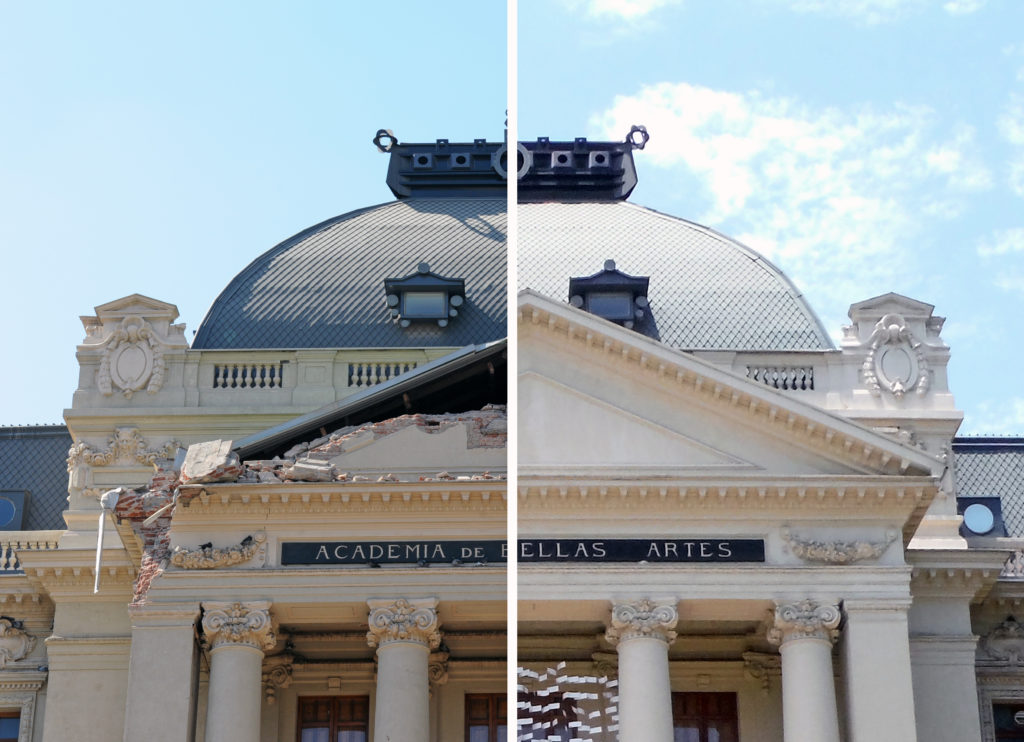Those who cannot remember the past are condemned to repeat it.
The above quote explains why our structural engineering team has been active in post-earthquake reconnaissance efforts after many large earthquakes and tsunamis that have occurred around the world. Failure teaches us a lot about good design; there are lessons to be learned from each seismic event. Our codes and design standards are largely the result of iterations of lessons learned from earthquake failures. Therefore, as structural engineers, it’s important that we pay attention to these events, learn from them, and incorporate these lessons into our design as we advocate for the increased seismic resilience of our communities.
Seven years ago, I had the opportunity to join the Structural Engineering Association of Washington (SEAW) on a post-earthquake reconnaissance of the 2010 Chile Earthquake & Tsunami (you can read about our team’s observations from that trip here). As the first subduction zone earthquake and tsunami since The Great M9.2 Alaska Earthquake and Tsunami of 1964, this event was of particular importance to us in the Pacific Northwest recognizing the parallels with the Cascadia Subduction Zone (CSZ) event (aka “The Really Big One”) that we’re expecting any time*.
This past January 2017, I had the opportunity to return to Chile to present at the 16th World Earthquake Engineering Conference in Santiago. Therefore, while “in the neighborhood”, I decided to literally retrace my steps from 2010 to observe some of the sites we visited to answer the following questions:
- How have they recovered?
- What has changed? What has not changed?
- What can we do to follow the lead of one of the most seismically active countries in the world?
On this, the 7th anniversary of the 2010 event, I thought I’d share a brief summary of my observations from this earthquake re-reconnaissance rendezvous:
OBSERVATIONS & CONCLUSIONS
Chile’s Recovery Observations
- In general, they are back to “normal” life seven years later.
- The larger cities have recovered faster than smaller towns, where damaged/abandoned buildings and vacant lots are still prevalent.
- Damage and earthquake evidence is there, when you’re looking for it (e.g. minor cracking and ground settlement).
- Chile has had three >M8 earthquakes in the last three years without significant damage. They are very resilient.
- The population is generally very aware of earthquake & tsunami hazards.
- Severely damaged buildings were salvaged. They were often painted or branded differently to appear like a new building.
- Many URM & confined masonry buildings survived and are still being used.
- Many newer buildings have seismic protection systems (i.e. fluid viscous dampers).
- Tsunami areas are built back in the same vicinity, but with tsunami considerations and vertical evacuation.
Personal Post-Post Earthquake Reconnaissance Experience Observations
- Some areas look like what was remembered; others have changed dramatically in seven years.
- Buildings can be hard to find (again).
- Since people are back to normal life, they look at you weird when taking photos of buildings.
You can learn a lot by talking to people and “sweet talk” your way into restricted areas to take photos (I got to practice my Spanish a lot). - Being tall helps – a lot of photos were taken reaching over fences.
- It’s an odd, déjà vu, dream-like experience to trace your own steps 7 years later.
- Chile is relatively resilient because they frequently get large earthquakes – there’s a lot we can learn from them.


